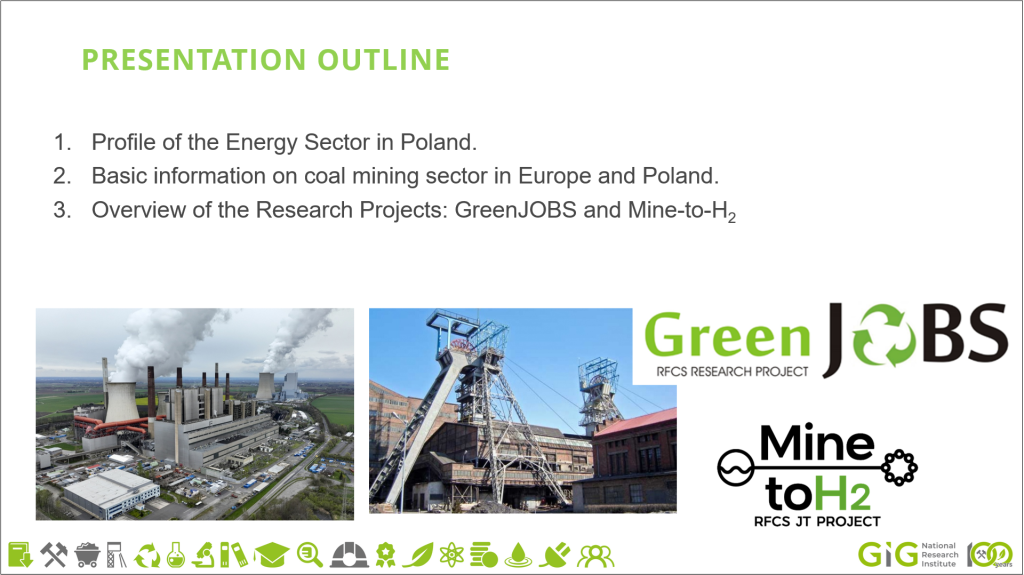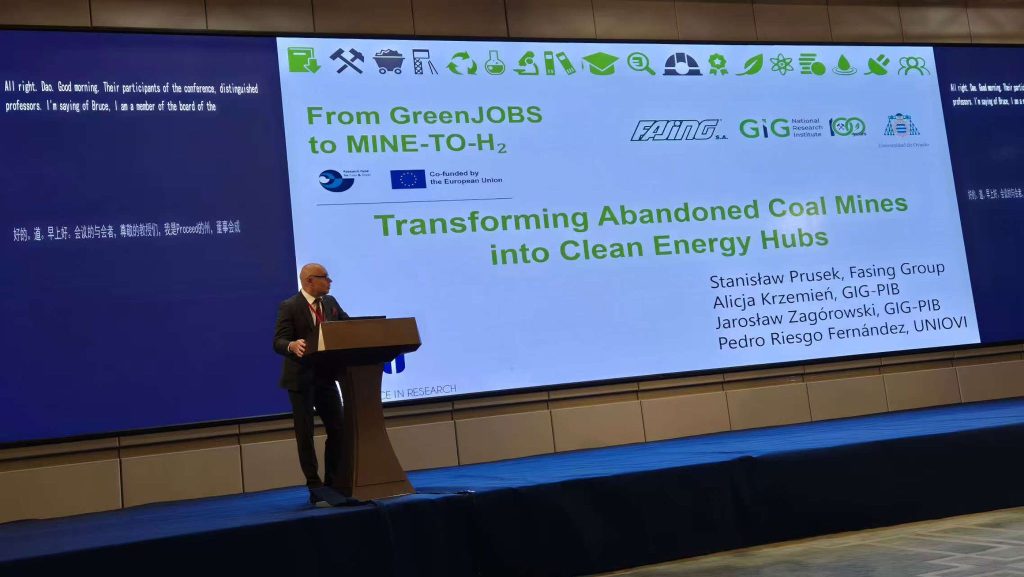1.- A logo was born. The logo represents the process of creating green hydrogen with its path from water to hydrogen. Two icons, representing water and the electrolyzer, were created and joined together to form a hydrogen molecule.
Download the logo creation process

2.- High-level RFCS Event “European Coal in Transition: rising like a phoenix” organised by EURACOAL and the European Commission’s Research Executive Agency (REA) (Pozo Sotón, Oviedo, Spain, 8 May 2024).
Download the Agenda of the Event
The event was organised at the former Pozo Sotón coal mine near Oviedo in Asturias to promote the RFCS research programme calls and discuss future priorities. Several EURACOAL members attended, including the acting EURACOAL president, Ing. Vladimír Budinský, who delivered a keynote address with a clear message: the RFCS is a successful research fund that now assists transformation in the coal regions and lays the foundations for new energy systems of the future. Referring to the RFCS technical guidelines, he called for the scope of the research programme to be broadened to support a great variety of projects in line with “a climate-neutral and environmentally friendly transition”, especially the repurposing of former mines and other coal-related sites even if research activities do not directly involve coal, the “black gold”.
Mr Enrique Fernández, President of HUNOSA, who kindly hosted the event, spoke on the transformation of Spain’s largest coal mining company to an energy provider focused on renewable energy sources and the energy transition, providing economic activity and jobs in the areas it had mined in the past. He highlighted the already operating district heating networks using mine water combined with biomass boilers and announced the construction of a 2.8 MW PV park, the largest in Asturias.

Paul Webb, Head of Department B “Green Europe” and responsible for the RFCS research programme at REA, opened the workshop with a statement that drew parallels between the current energy transition and coal phase-outs in the EU and the mine closures in his native Britain during the 1980s. He warned of the social and economic consequences for the affected communities that can be avoided through well-targeted support.
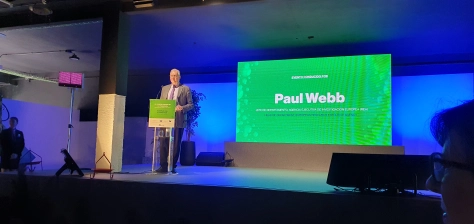
Marc Lemaître, Director-General for Research at the European Commission DG RTD, delivered a video message EU Research and Just Transition describing coal as a good example of how the EU can and must manage the green transition in a fair and just way. He stated that the European Commission’s recent communication on a climate target for 2040 – a proposed 90% emission reduction – would mean the phase-out of unabated coal by 2040. On the 2021 updates to the RFCS legal basis, he spoke of the now better fit with EU climate and energy policy, including the new and much larger “big-ticket” calls. He promised the coal regions that the Commission “will be at your side to make the best use of the numerous supporting tools at hand”.
In the presentation of the €18 million Mine-to-H2 project, Prof. Alicja Krzemień, head of the Laboratory for Risk Assessment and Industrial Safety at the GIG National Research Institute and Yago Somoano Rodríguez, head of the innovation department at HUNOSA, underlined the project’s potential for sector coupling and a just transition. They explained how the repurposing of a closed coal mine and its water management system for green hydrogen production would link to an existing geothermal plant, a PV park at a former open-pit coal mine, a storage and distribution facility for hydrogen at 500 bar, tanker truck transport (or “virtual hydroduct”), a hydrogen refuelling station for a prototype hydrogen bus, hydrogen injection into the fossil gas network, and training/reskilling programmes for former coal mine workers.
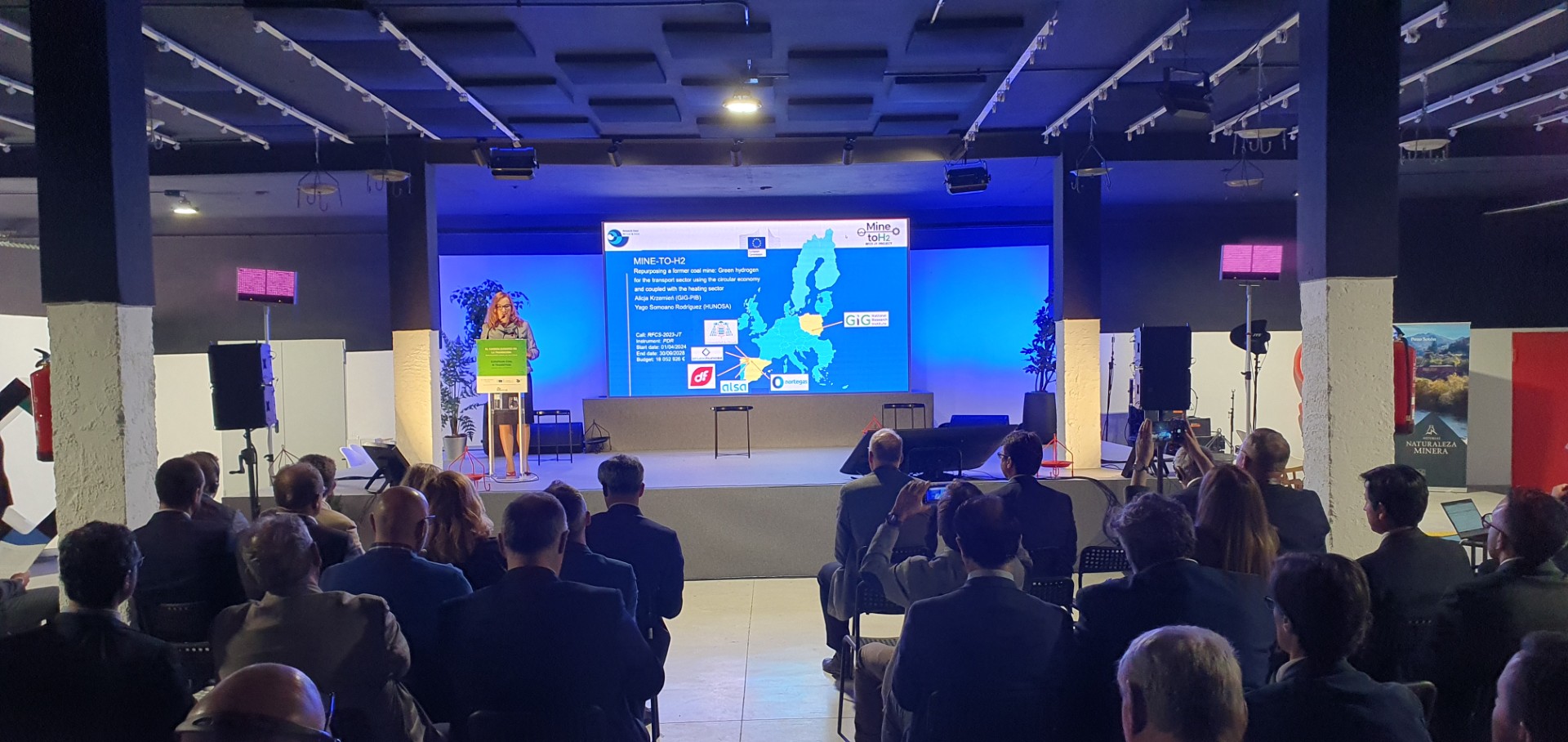
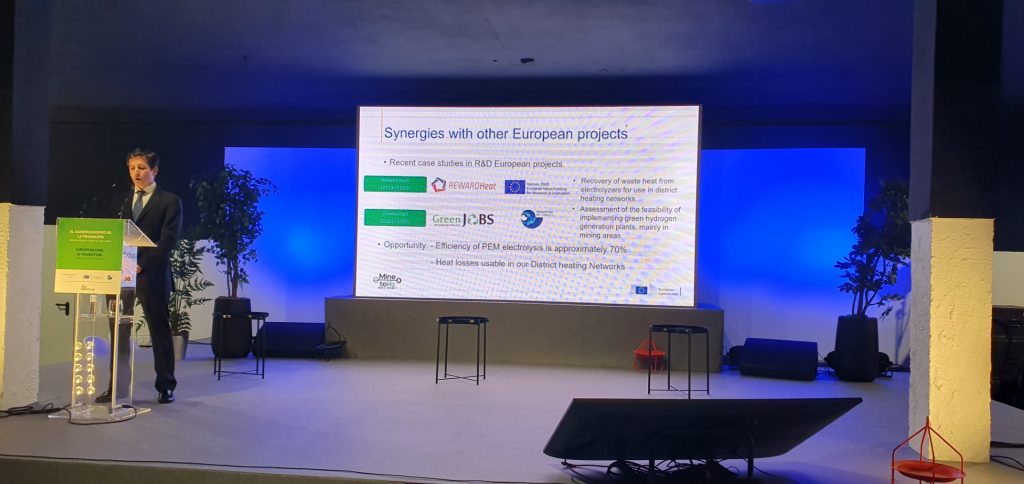
The panel discussion was moderated by Dr Sebastiano Fumero, Head of Unit REA.B1 “Future Low Emission Industries” at the European Research Executive Agency. During the panel, María Lorenzo Conto, Director for energy and business development at HUNOSA, called for better connections between the different areas of energy transition: renewable energies, geothermal, and CO2 capture projects, with hydrogen acting as a bridge. Luis Bausela Sanchez, Business Development Director at Duro Felguera, added the regional angle, praising the steel, fertiliser and engineering sectors in Asturias, as well as its infrastructure and large utilities such as EDP, making it an ideal location for hydrogen deployment. He argued for smaller hydrogen projects (<10 MW), as the economic conditions for larger projects were not yet favourable. Miguel Ángel Alonso, Director of Engineering at ALSA, pleaded for technology neutrality to allow the full deployment potential of hydrogen in the transport sector using fuel cells and e-fuels.
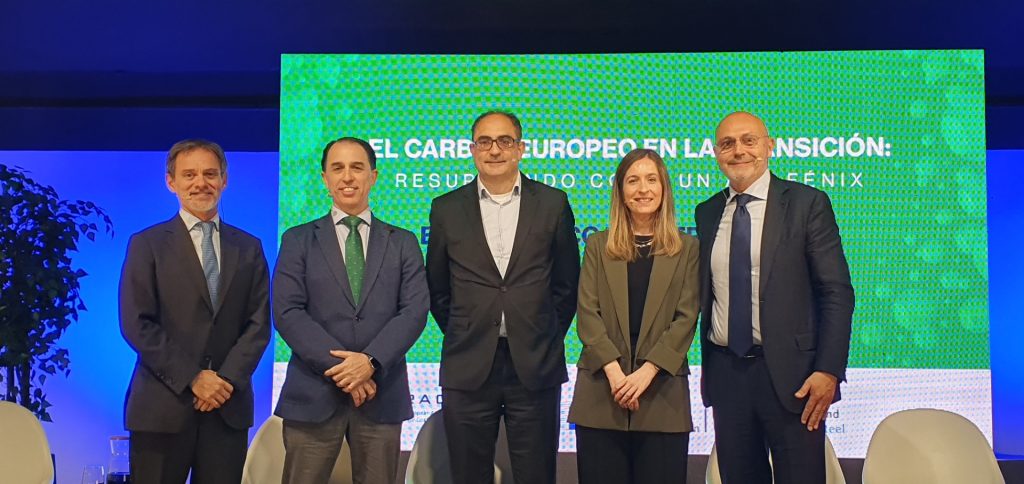
News about this Event that appeared in the press (click on the logos to access the news):








And on the TV (click on the logo to access the video):
3.- MINE-TO-H2 Project was presented by HUNOSA in the 66th International Trade Fair of Asturias which took place from August 3 to 18, 2024, in Gijón (Asturias, Spain) with more than 740,000 visitors, accredited through an audit commissioned by the Association of Spanish Fairs.

4.- The MINE-TO-H2 Project was showcased at the Polish Economic Society Katowice Branch during the conference “Current state and perspectives of hard coal mining in Poland” in the presentation Potential of decommissioned hard coal mines (Katowice, Poland, 7 November 2024).
Download the conference programe
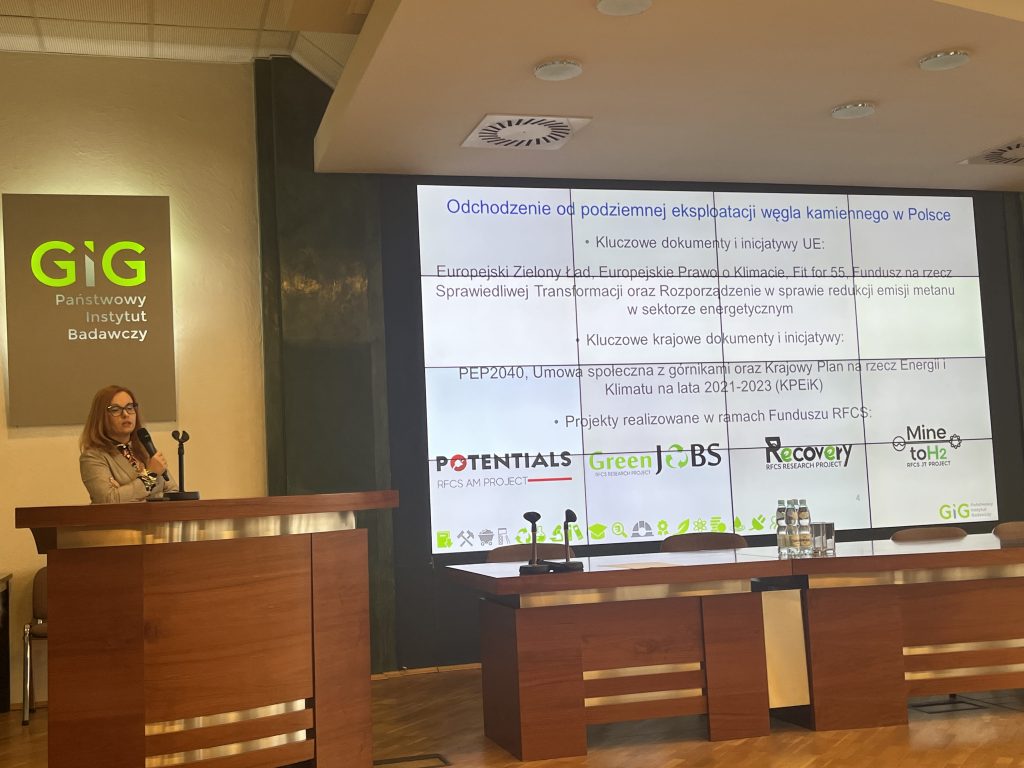
5.- MINE-TO-H2 Project was presented at the Workshop on Potential of Renewable Gases for a Strategy in Asturias organised by FAEN and the Asturias government (Gijón, Asturias, 2 December, 2024).

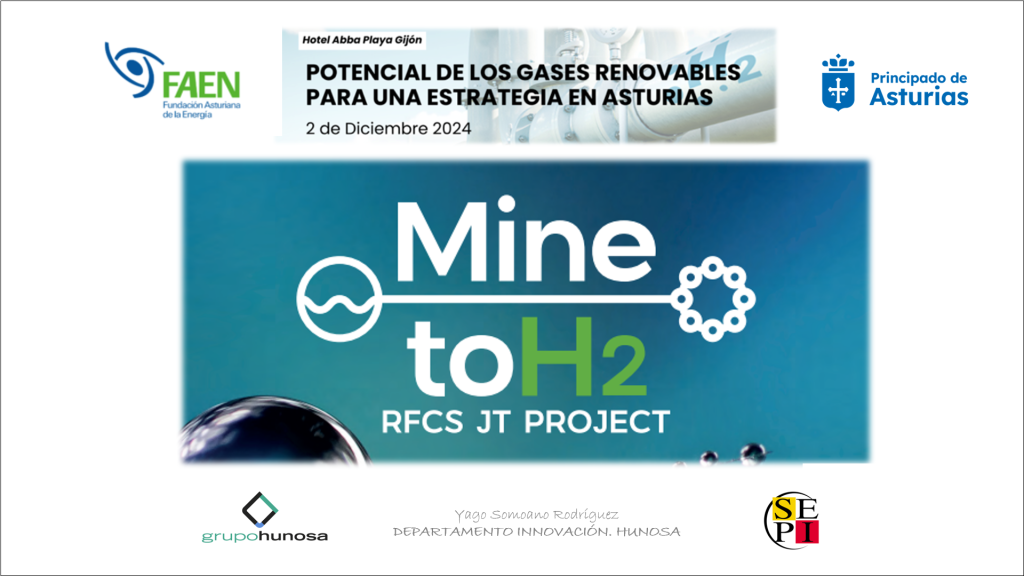
News about this Event that appeared in the press (click on the logos to access the news):


6.- Presentation at the International Workshop on Mining and Post-mining Issues during the Energy Transition at the “Faculty of Mining, Safety Engineering and Industrial Automation – Silesian University of Technology” titled Feasibility of repurposing decommissioned coal mines for green hydrogen production using circular economy principles (Gliwice, Poland, 5 December 2024).
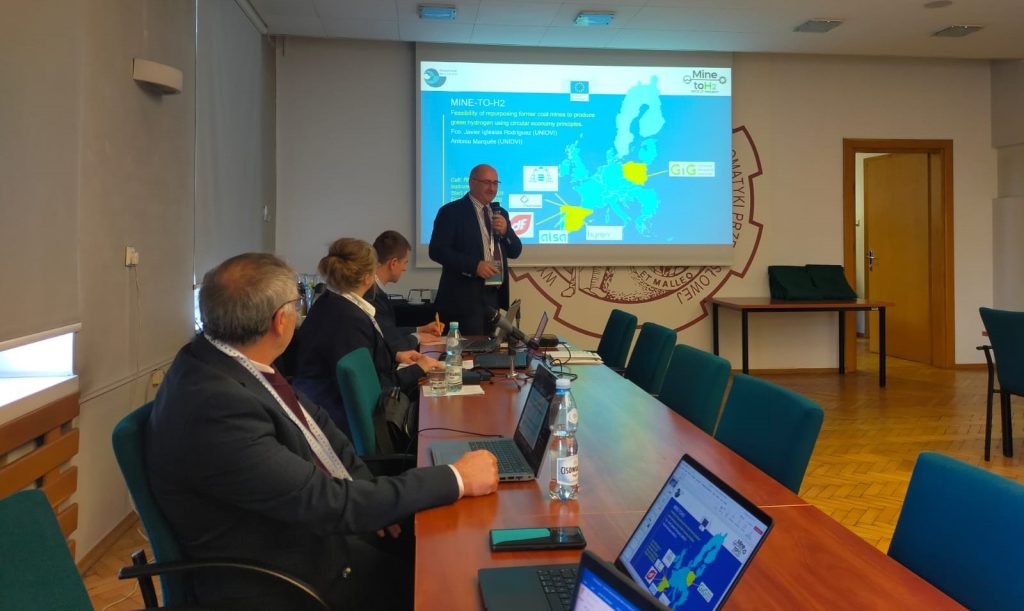
7.- MINE-TO-H2 Project was presented in the EKOLOGIA magazine, Issue 4/112, 2024, in an Interview with “Jarosław Zagórowski, Director of the Central Mining Institute – State Research Institute (GIG-PIB)” on Globalization , transformation, decarbonization. Challenges in the activities of GIG-PIB (Katowice, Poland, December 2024).


8.- The MINE-TO-H2 Project was presented at the First International Congress on mine closure management and how it differs from environmental liabilities, organised by Minería y Medio Ambiente Estudio Jurídico Ltda. at the Sheraton Hotel in Bogotá (Bogotá, Colombia, 21-23 May 2025).
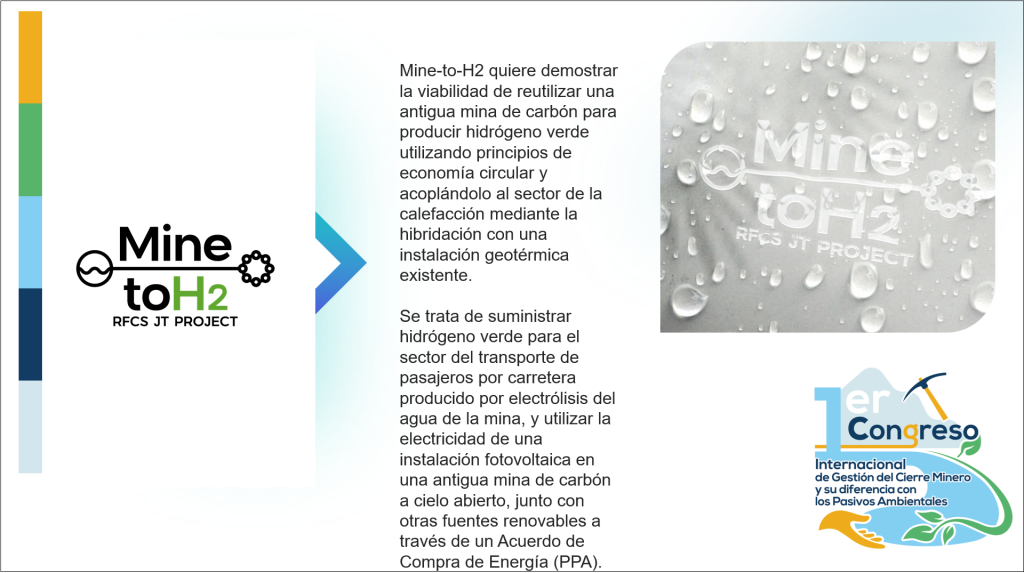


9.- The MINE-TO-H2 Project was presented at the ICTEA Research Days 2025, organised by Institute for Space Sciences and Technologies at the University of Oviedo (Oviedo, Spain, 10-20 June 2025).
Access the webpage of the ICTEA Research Days 2025
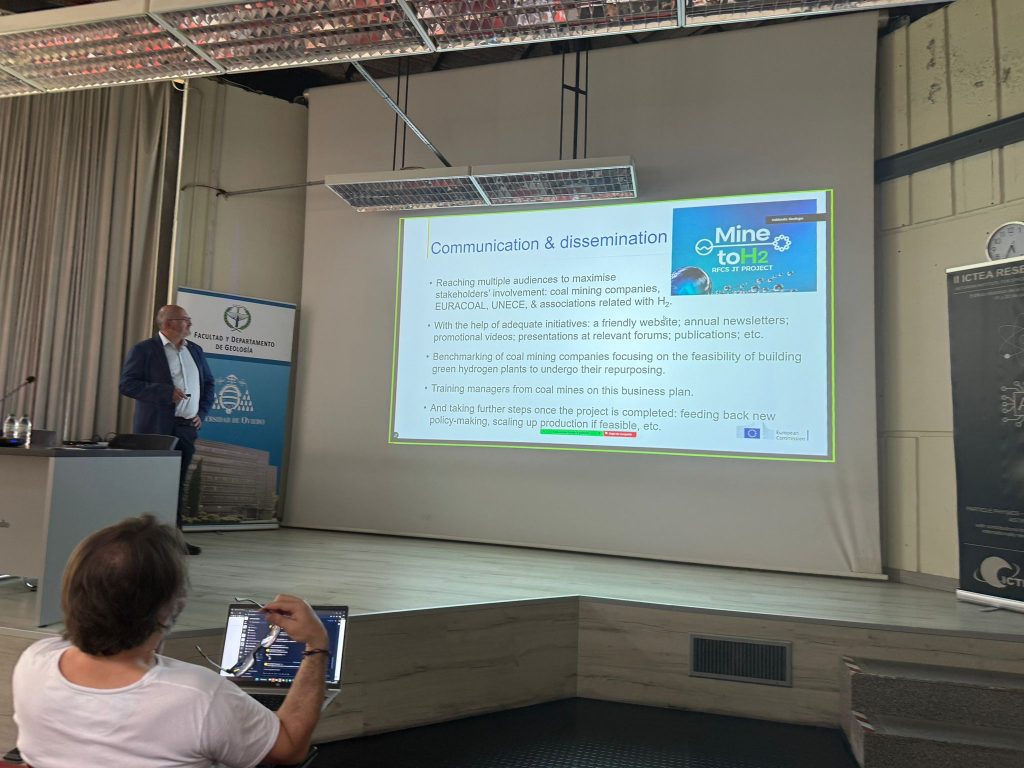
10.- The MINE-TO-H2 Project was showcased at the 100 years of the Central Mining Institute – National Research Institute Conference on Mining the Future: Sustainable Development and Energy Transformation in the European Union (Katowice, Poland, 2-3 June 2025).
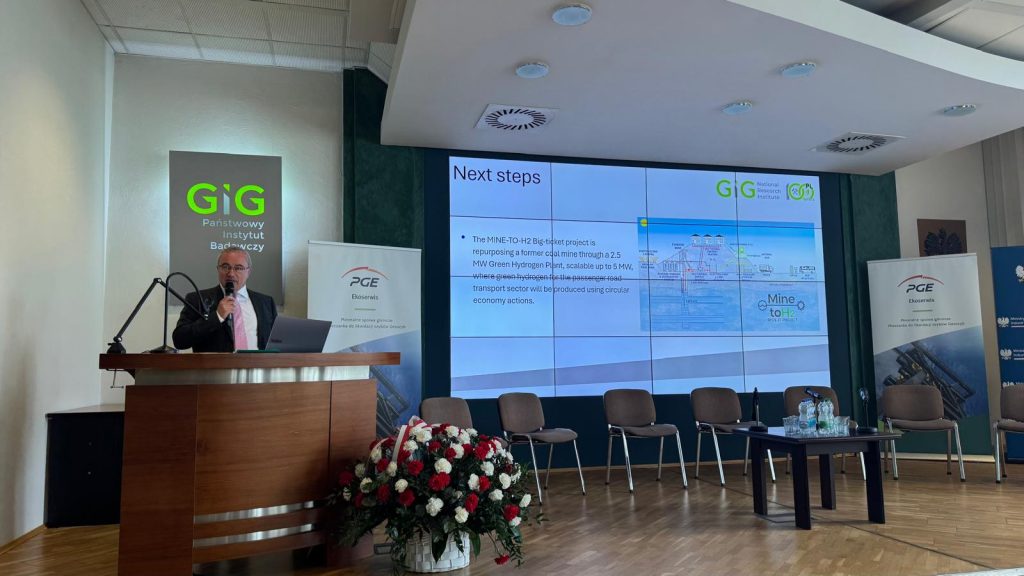
11.- The MINE-TO-H2 Project was showcased at the Summer Course on Geothermal Renewable Energy, from Theory to Practice, organised by the University of Oviedo, during the conference Low-enthalpy geothermal energy: the geothermal resource of mine water (Mieres, Asturias, Spain, 18 July 2025).
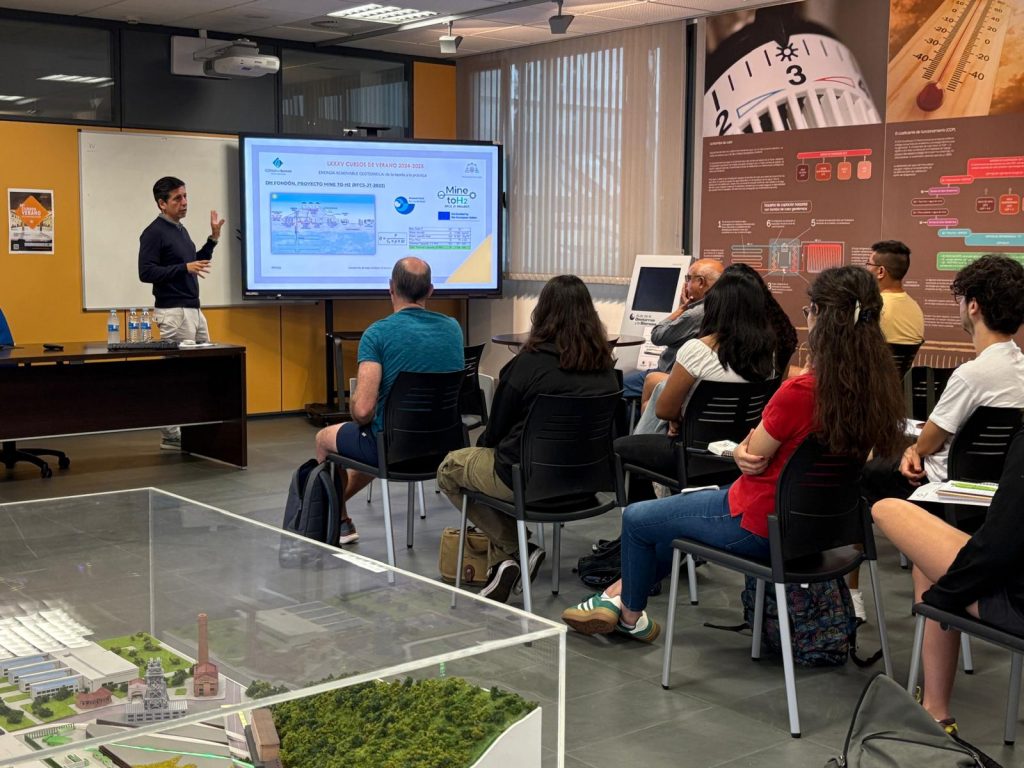
12.- Promotional video of the project (October 2025).
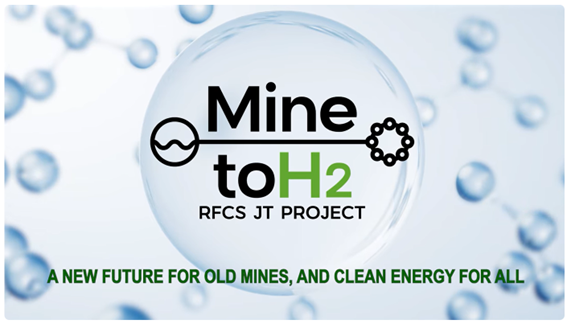
13.- The MINE-TO-H2 Project was presented at the 8th International Symposium on Mine Safety Science and Engineering (ISMSSE 2025), organised by the International Committee of Mine Safety Science and Engineering (ICMSS) and hosted by Henan Polytechnic University in Shanyang District, Jiaozuo (Henan, China, 10-12 October 2025).
Access the webpage of the Symposium
